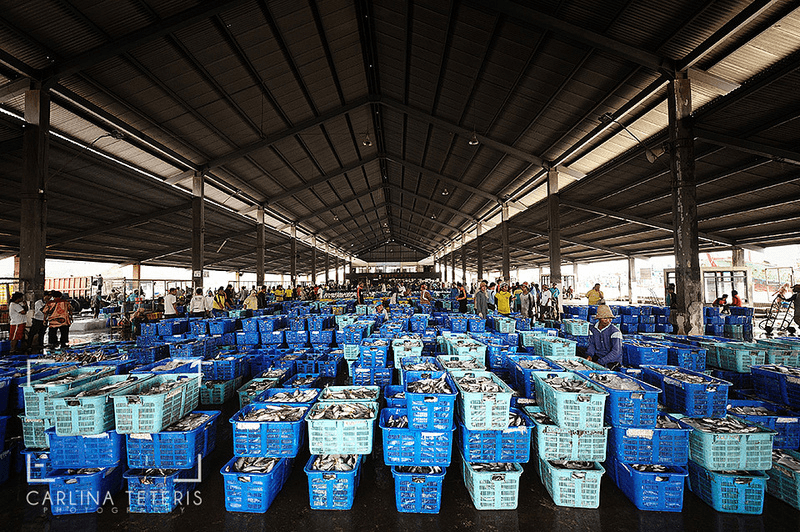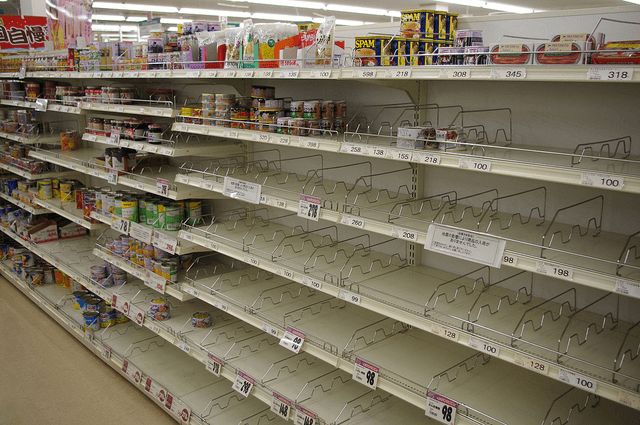I’ve been writing for the Ecommerce Blog for well over a year now – and in all that time I’ve never really dug deep into the importance of inventory management.
I think now’s the time to tackle the issue – because if you don’t get inventory management right, your business will fail. Sounds dramatic, huh? Well, that’s because it is.
Inventory management software, like Sellbrite, synchronize stock levels across all of your different selling platforms – which allows you to offer stock for sale on more than one channel at a time. The primary benefit of this is to prevent overselling of your products, which protects you from the negative repercussions of having to cancel orders.
However, as great as Sellbrite is, it can’t compensate for a business owner or buying manager that simply doesn’t understand the importance of inventory management, or why it’s so important to keep tight controls over your stock levels.
In this article I want to drive home the importance of inventory management and look at the perils of over stocking and under stocking – and why both scenarios can dump you out of business.
Over stocking
Even though I’ve been trying to master the art of inventory management for nearly a decade, I still get it wrong (surprisingly often!).
My problem is that I’m forever the optimist – I often order way too much stock; far more stock than we’ll actually sell within a reasonable period of time.
Knock on wood, this hasn’t caused a big problem for my business – but it’s easy to see how it could prove fatal. By tying money up in stock, you’re restricting the lifeblood of your business (ie, cash).
You soon run out of cash to pay rent, rates, employees and so on. Buying lots of stock can be attractive because you’ll never run out and you’ll never disappoint customers – you may even get a bigger discount with suppliers for buying more. But buying lots of stock does have its pitfalls, while the stock is unsold you’ve got piles of cash tied up that you cannot spend.
I’ve made the assumption that the aforementioned excess stock is NOT time sensitive. If your excess stock IS time sensitive then there’s a chance you’ll never be able to relieve the cash tied up in it.

Companies selling products like flowers and food have to be extremely careful not to over stock – such lines will spoil within a relatively short period of time. When stock becomes spoiled it’s effectively worthless – and it can end up costing your business thousands upon thousands of dollars.
Tied up cash isn’t everything though – although it’s super important. When your business holds too much stock, it often comes at the cost of space. There’s no fun in being made to work in a cramped warehouse all day long, where every last inch of space is covered with excess stock. Over stocking has many implications; a squeeze on cash flow being the most serious – along with potential spoilage of time sensitive goods – but the logistics of where excess stock is stored can also cause major headaches.
Under stocking
Just like over stocking, under stocking can kill your business.
If you under stock, you could be missing out on valuable sales (and profit) – because when customers come to your website to buy something, you don’t have them in stock.
There’s nothing worse than losing sales in business, especially when it’s so avoidable. Another consequence of under stocking is that customers soon become disgruntled and it won’t take much for them to vow never to buy from your website again. Do you really want to annoy your customers? The answer is no.

Under stocking can lead to lost sales when you need them to most – it can have a huge effect on your company’s profit, and it can really start to alienate your hard-won customer base. Under stocking is poisonous, so if you start to see lots of lines out of stock on your website, address the situation promptly to reduce the number of occurrences of items being out of stock going forward.
It’s not just the fact you’re losing sales that matters – it’s the fact customers have no choice other than to look to your competitors for the products they need. When people start buying from your competitors instead of you, the problems really start.
A happy medium
It’s really hard to maintain a happy medium – so your business isn’t cash-strapped because you’re over stocked, and it’s not struggling to make sales because your shelves are sparse. Every business out there is different, but what I tend to do is to analyse monthly consumption of stock – then multiply that consumption by 1.25.
That means I have roughly enough stock to last one month plus a week or so. If demand surges, I’ve got that buffer stock to sell to customers – if not, then the buffer stock remains at the end of the month. It allows me to maintain the balance between cash flow and having products available to ship to customers when they want them the most.
The frequency with which you order will also have a great impact on how well you’re able to manage your inventory. Ideally a weekly order is best – it allows you to keep your finger on the pulse of your business and stock up on lines that are selling well, there and then. For most businesses, weekly orders just aren’t practical – so monthly or bi-weekly orders tend to be common.
Remember to factor in lead times from suppliers, too. If you’re bringing products in from suppliers domestically then lead times are likely to be a few days – perhaps up to a week. If you’re bringing products in by air, you could be waiting a couple of weeks – and if you’re bringing them in by sea, you could wait two or three months.
Maintaining inventory levels is certainly not easy, but in order to succeed in the world of ecommerce you must have the products available for customers to buy when they want them.
Special occasions
I mentioned my 1.25x monthly sales multiplier when placing orders – this holds true 80% of the time. When special occasions like Valentine’s Day, Christmas and New Year come round, then I always make sure to increase orders to the last month’s consumption, multiplied by 1.5-2. Sales at these busier times of year are naturally higher – so it’s worth ordering a little more stock to cover any swell in demand.
When the invoices start to roll in during January you’ll need to manage your cash flow carefully to pay them all – but come February when you’re still selling stock left over December, you’ll find monthly outgoings are much lower (albeit temporarily).
Inventory management is absolutely crucial to the success of your ecommerce business. You can spend tens of thousands of dollars on marketing, hundreds of dollars on hosting, and millions of dollars on premises – but if you don’t have the right amount of stock to sell to your customers at the right time, your business just won’t make it.
Now is the time to take inventory management seriously. Without inventory management procedures and controls in place, it’s easy to suffocate your business’ cash flow, or make absolutely no profit (or sales).


